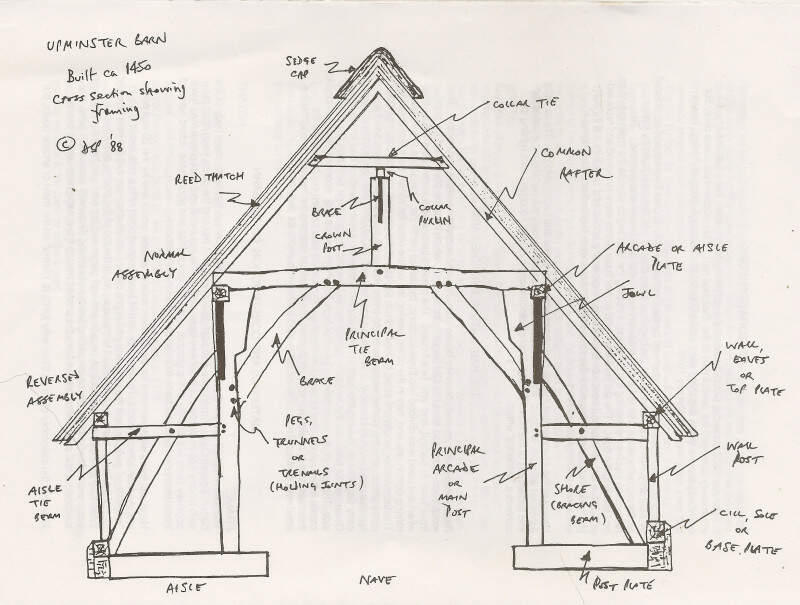
The Upminster Tithe Barn holds 14,500 domestic and agricultural artefacts dating from Roman times to the present day.
The thatched building the museum is located in dates from the 15th century.
The Barn dates from 1450 and was part of an estate that supported the Abbey of Waltham. The Abbott’s hunting lodge next door was later converted into a private house and is now home to Upminster Golf Club.
Despite being known as the ‘Tithe Barn’, there is no evidence to suggest it was ever used for the collection of tithes.
The Tithe Barn stands 18 metres wide by 12 metres high and 45 metres long.
It wasn’t until 1976 that the Barn was refurbished and then opened as an agricultural museum.
Tithe comes from an Anglo-Saxon word meaning tenth. People would give a tenth of their wealth to the person whose land they lived on (this could be a tenth of their money or a tenth of the food their family had grown on the land they rented). Often the landowner was the Church.
In medieval times, these tithes would have been collected and stored for the landowner in a special barn: a tithe barn. Tithes to the landowner continued to be stored in special barns in England until 1938!

A sketch cross-section of the tithe barn © Friends of Upminster Tithe Barn
Learn more about archaeology and the tithe barn in this video clip with MOLA archaeologist Paul McGarrity.
Skip to 10:00 for instructions on how to make a tithe barn money box.
Despite its name, there is little evidence that this ‘tithe’ barn was actually used for collecting tithes! More research is needed to find out what it was used for.
Thames Chase Trust, Pike Lane
Upminster, Essex RM14 3NS
01708 642970
landofthefanns@thameschase.org.uk